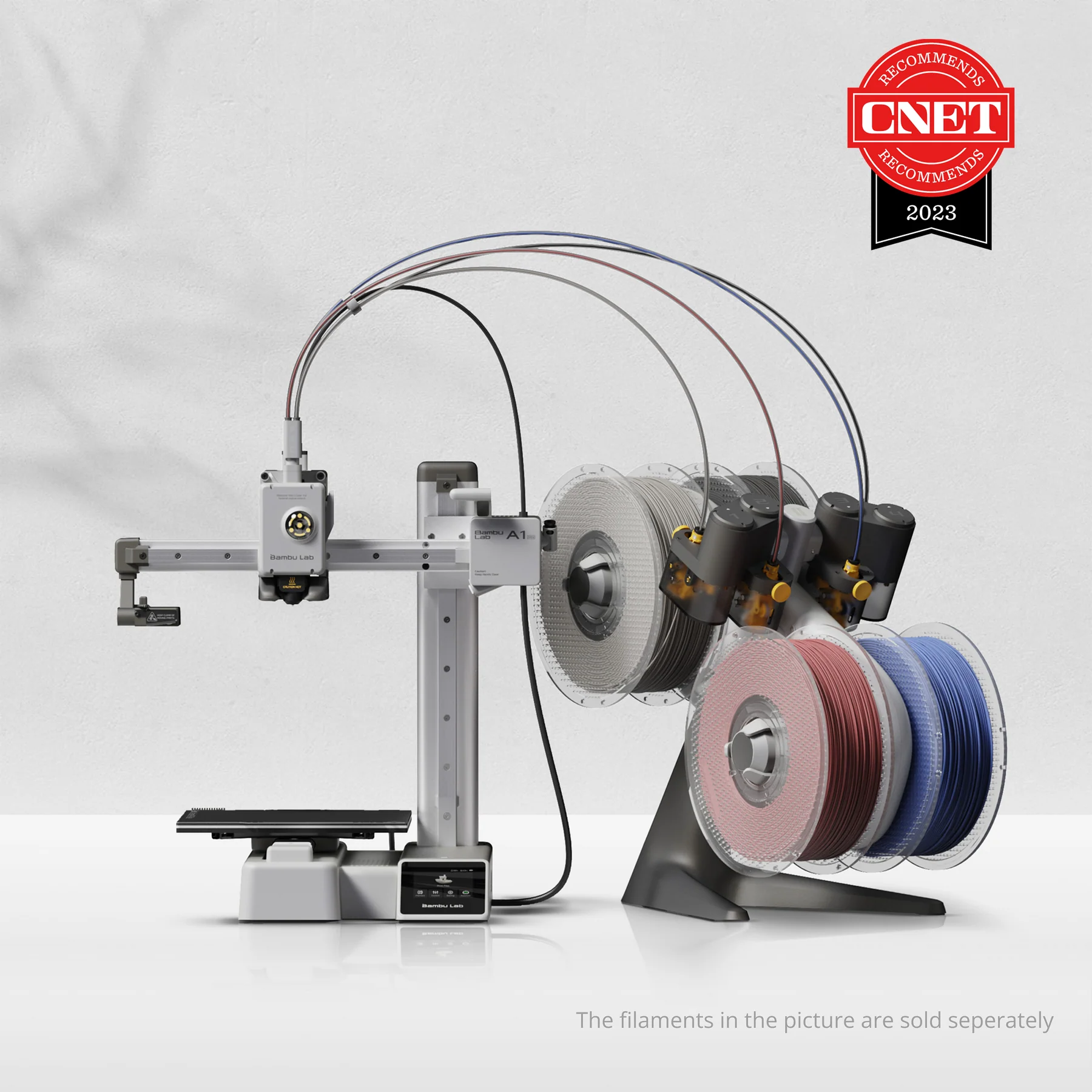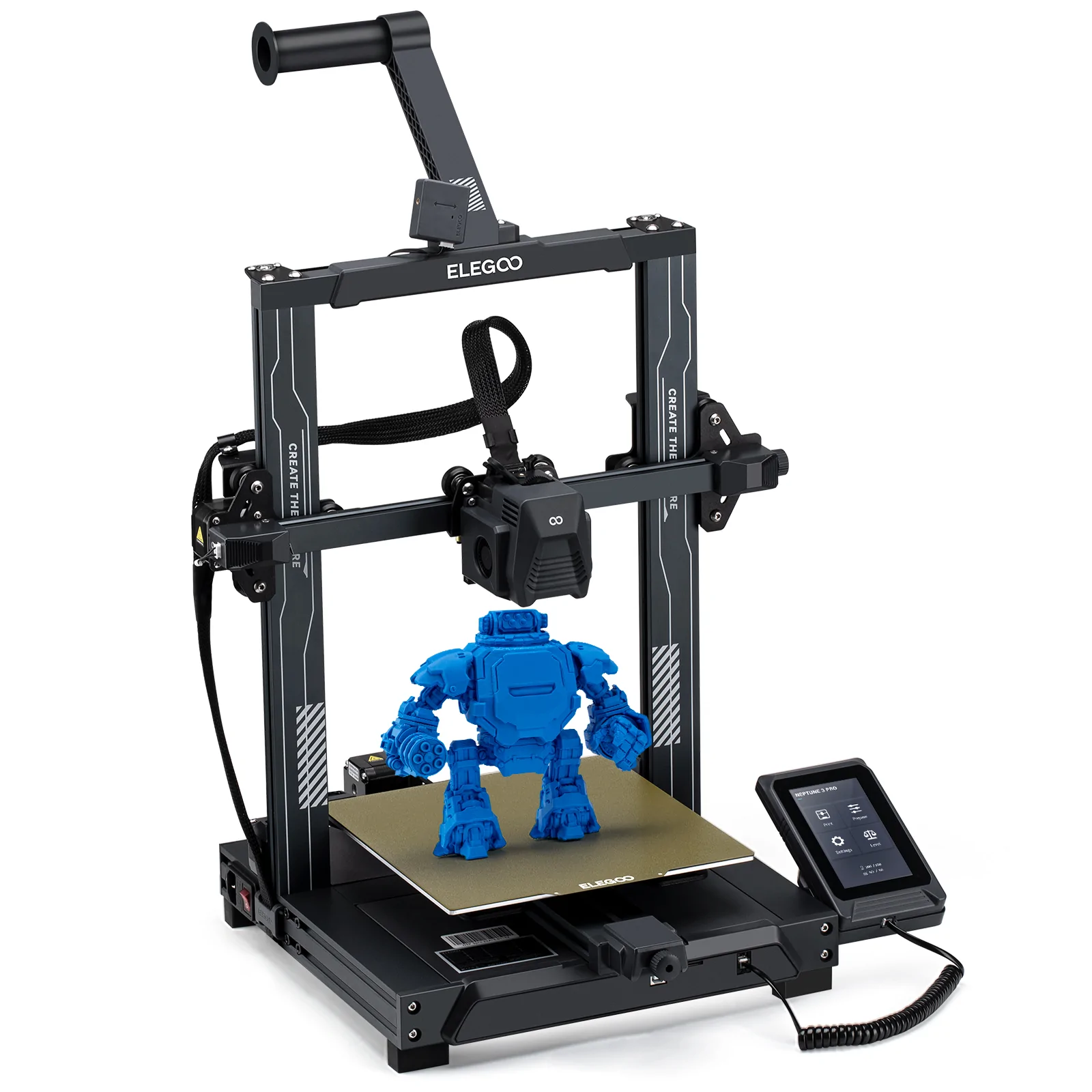Compare A1 Mini vs Neptune 3 PRO
Comparison between the best 3D printers
Choose the best 3D printer at the best price. The cheapest 3D printers are here.
Buy a 3D printer here with 3D Fila.
 |
 |
|
| Model | A1 Mini |
Neptune 3 PRO |
| Printing Material | Filament | Filament |
| Buy Filament for Bambu Lab A1 Mini | Buy Filament forElegoo Neptune 3 PRO | |
| Estimated price | $549,00 | $230,00 |
| Manufacturer | Bambu Lab | Elegoo |
| Release Year | 2023 | 2022 |
| Print Volume [mm] | 180x180x180 | 225x225x280 |
| Printer Size [mm] | 315x347x365 | 445x515x475 |
| Weight [kg] | 5,5 | 8,1 |
| Power Loss Recovery | YES | YES |
| Enclosed printer | NO | NO |
| Bed Leveling | Automatic | Automatic |
| Filament End Sensor | YES | YES |
| Bed type | Heated | Heated |
| Power supply system | Direct Drive | Direct Drive |
| Standard nozzle | 0,4 | 0,4 |
| Maximum Nozzle Temperature [°C] | 300 | 260 |
| Maximum Bed Temperature [°C] | 80 | 100 |
| Maximum printing speed [mm/s] | 500 | 80 |
| Filament holder | YES | YES |
| Camera for supervision | YES | YES |
| Recommended filaments | PLA, PETG, TPU, PVA | PLA, PETG, Tritan, Flex, ABS |
| Recommended slicers | Bambu Studio, Super Slicer, Cura, Prusa Slicer, Orca | Cura, Simplify, Slic3r, IdeaMaker e outros |
| Maximum Resolution [mm] | 0,1 | 0,1 |
| Processor | 32-bit Silenciosa | |
| Display | Touchscreen 2,4'' | Display touchscreen 4,3'' |
| Power Supply | 150 W | 250 |
| Connectivity | Wifi, Bambu bus, Cartão SD | |
| Operating systems | Windows, Linux, Macbook | Windows, Mac, Linux |
| Date of registration in the system | 2024-04-10 | 2023-03-02 |
| Release date | 2023 | 2022 |
| Extra features | The Bambu Lab A1 Mini stands out not only for its impressive speed and automatic calibration, but also for its multi-color printing capability thanks to AMS Lite. This innovative system makes multi-color printing easy, making it accessible to everyone. AMS Lite, specific to the A1 Mini, supports up to four different materials simultaneously, providing creative freedom without complications. With comprehensive sensors for energy monitoring and recovery, a camera for timelapses and Wi-Fi control, the A1 Mini and AMS Lite together offer an intuitive and advanced 3D printing experience, ideal for materials such as PLA, PETG and TPU, and designed for simplicity and fast maintenance with quick-change nozzles. | The Elegoo Neptune 3 Pro printer stands out for its easy assembly and automatic bed leveling, ideal for different levels of users. Equipped with a direct-drive extruder and dual gears, it offers excellent adhesion to slippery materials such as TPU. It incorporates dual screws on the Z-axis, ensuring stable prints, and features an integrated task light for improved visibility. With a PEI-coated build plate and a detachable touchscreen, it combines functionality and convenience. The printer also features an efficient cooling system, filament sensor and a simplified user interface. |
| Support for multiple colors and materials (AMS and CFS) | YES | NO |
Notes * |
||
| Cost-benefit | 7 / 10 | 6 / 10 |
| Hardware | 4.2 / 10 | 2.4 / 10 |
| Tela | . | . |
| Print volume | 3 / 10 | 3 / 10 |
| Performance | 4 / 10 | 0 / 10 |
Conclusion |
| In conclusion, when comparing the Bambu Lab A1 Mini and the Elegoo Neptune 3 Pro, potential buyers must consider their specific needs and preferences. The A1 Mini, despite a higher price point, offers a range of advanced features such as remarkably high maximum printing speeds, support for multi-color printing, and superior sensor technology, making it ideal for users looking for versatility and efficiency in their 3D printing projects. Its compact design and intuitive interface also cater well to those who value a streamlined and advanced user experience. On the other hand, the Elegoo Neptune 3 Pro presents a more budget-friendly option without compromising on essential features like automatic bed leveling and user-friendly assembly. Although its performance metrics are lower in some areas, it stands out for its robust construction and stable printing capabilities. This printer is particularly suitable for hobbyists or beginners who are looking for a reliable machine without the additional complexity that comes with higher-end models. Ultimately, the choice between the two will depend on the user's priorities—whether they lean towards more innovative technology and faster printing or prefer a solid and reliable machine at a lower cost. Both options provide decent cost-benefit ratios and cater to different segments of the 3D printing market, ensuring that there is a suitable printer available for a diverse range of applications and user expertise levels. |

